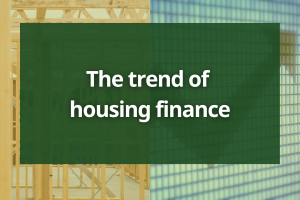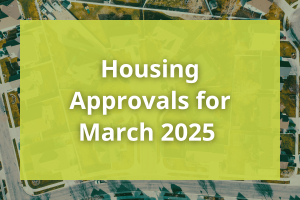Almost unbelievably, the pipeline of Houses under construction grew 0.6% in the September quarter, despite commencements falling 4.9% over the same period. The data shows completions were still lower than commencements (by a tight 24 houses), underscoring the challenges in getting the nation’s demand built right now.
The ABS’ quarterly Building Activity data series is the gold standard in terms of understanding exactly what is happening with residential construction, at least from the aggregated public data series.
The chart here shows that save for the recent experience, commencements and completions generally track one another pretty much equally. The residue of Houses under construction provides the basis for calculating some important measures, including how long it takes to build a house.
The truly remarkable point in the chart right now is that at the end of the September quarter of 2022, houses under construction totalled 104,331 separate houses – yet another record.

New House commencements during the September quarter were 29,177 a decline of -4.9% over the previous quarter. However, even though new house completions increased in the quarter (up 2.6% to 29,153) this was still lower than the number of commencements. This resulted in the increase of 0.6% in houses under construction.
An obvious consequence was the flow on effect on the value of work in the pipeline. The value of work residing in the pipeline lifted 4.2%, to $28.09 billion, which on a year-end basis was a staggering $107.16 billion. That is just for houses, not accounting for any other dwelling or construction format.

Obviously, commencements and completions feed into each other and unless capacity is expanded, the increase in work in the pipeline translates to longer build times which we have discussed in previous editions of Stats Count.
A special data release by the ABS provides insight into this situation, with the completion time for new houses in the September quarter taking 8.94 months, an increase over the previous period when it was 8.58 months. This has grown from 6.45 months in the December quarter of 2020, which was the low point in this cycle.
The simple and disturbing reality is that the system of building dwellings in Australia is unable to keep up with the work in front of it. The reason this is of significant concern is that housing work booked at one value, on one set of interest rates and often razor thin markets, can very soon cost more to build because of materials costs or interest rate rises. Some days, that bites the builder and others, it bites the household. Little wonder lending defaults are starting to rise and some builders are struggling.

The September quarter also saw non-residential commencements experience another positive quarter, rising 3.2% to $13.08 billion for the period. The main contributor was Commercial construction which increased 16.4% to $5.14 billion.

Although, the data is not available, we anticipate the time it takes to complete a similar value of Commercial building will be significantly less than it takes for Houses. That’s good for the productive economy, but this solid pipeline of work is probably drawing scarce labour and equipment resources from the struggles besetting the housing sector.



